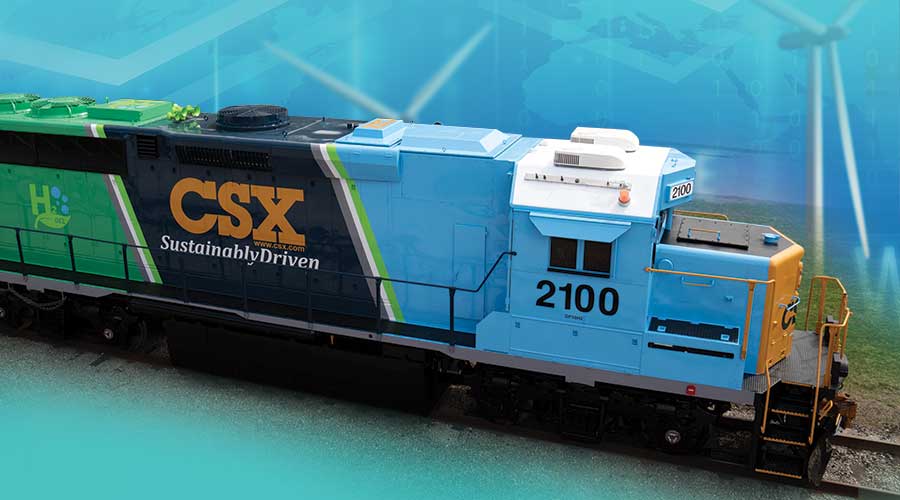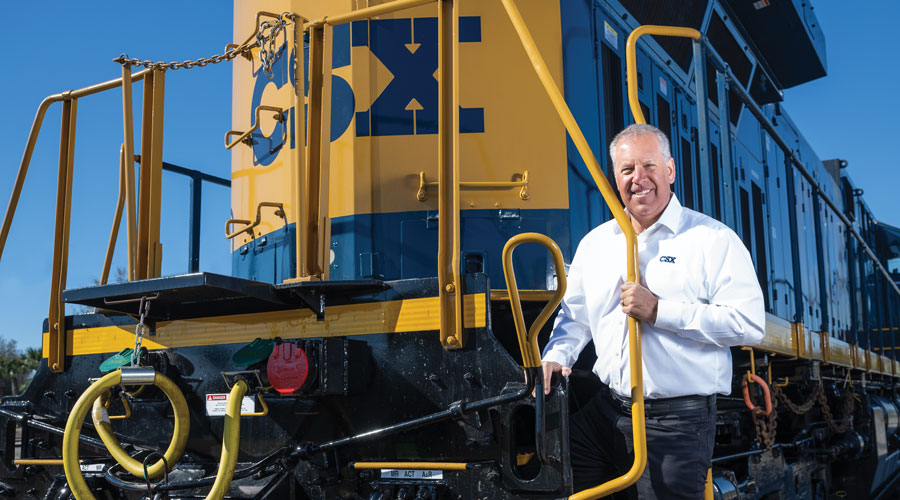Stay updated on news, articles and information for the rail industry
December 2010
Part 1 : Class I Engineering Execs: In Their Own Words
Part 2 :
In Their Own Words: John West
In Their Own Words: T.J. Drake
In Their Own Words: David Connell
Rail News: CSX TransportationIn Their Own Words: John West
John West
Vice President-Engineering, CSX Transportation
 |
John West joined CSX Transportation predecessor railroad Baltimore & Ohio in 1979 as a trackman/welder. Over his 30-year career, he has served in a variety of positions in the company's engineering and information technology departments. Those positions range from Signal Maintainer to Director of Information Technology for then-CSX affiliate Sea-Land Corp. He was named President of CSX Technology in 2004, CSX Transportation Vice President-Maintenance of Way and Structures in 2007, and Vice President-Engineering in 2008. |
1. What is your department's biggest challenge in the year ahead? Over the course of the next five years?
One of the most significant challenges is improving and expanding preventive maintenance of the track structure while supporting the company's capital investments in both routine maintenance and capacity expansion. Orchestrating all of this work while maintaining the safest, most reliable network possible is our biggest challenge and requires concentrated planning and execution.
Three key areas drive our safety and reliability initiatives: technology, training and capital investment.
Technology has helped our industry make great strides in train accident prevention over the past five years, especially in the area of track-caused derailments. However, we can do more with the right tools, especially those that could more effectively detect internal rail flaws. As an industry, we must continue to insist on a high grade of steel for track, maintain frequent inspections by our professional track workers, and encourage suppliers to further improve on rail flaw detection. Exponential improvement is the goal.
Regarding training, we have long anticipated significant attrition among experienced employees and the corresponding loss of institutional knowledge. With that attrition, it has become much more necessary to standardize training and to provide that training in a centralized location. We are fortunate at CSX to have our Tony L. Ingram Railroad Education and Development Institute (REDI) center in Atlanta to meet those critical needs. There, we provide comprehensive safety training for new employees and give them the skills they need to do their jobs.
Over the past three years, we have also leveraged the Process Excellence team to make quantum improvements in production efficiency. Lean manufacturing techniques have been applied at our Barboursville Bridge Shop, the Savannah Signal Shop and Bryan Park Work Equipment Shop with corresponding improvements in efficiency. Next, we plan to roll out process excellence tools to our division maintenance-of-way forces.
Capital investment also is critical to safety and reliability, as well as business growth. We recently announced an increase in capital spending in 2010 from $1.7 billion to $1.8 billion, with much of that spending focused on intermodal terminal improvements and other growth areas. We are moving forward aggressively with the $840 million National Gateway corridor project, a six-state public-private initiative to clear a rail corridor for double-stack intermodal traffic between Mid-Atlantic ports and Midwest markets.
2. How has the PTC mandate affected your department?
PTC is in the development and testing stage at CSX this year, and will continue in that mode through 2013 with pilot testing occurring in 2012. Hundreds of employees throughout the company are engaged in the project, with the Engineering team involved in evaluation of PTC technology partners and equipment, changes to signals and switches, and other related wayside enhancements.
CSX's PTC implementation plan has been approved by the Federal Railroad Administration, and it contains more than 13,000 separate tasks including the design, test and installation of systems on as many as 16,000 miles of track. In addition to the significant overall challenge of meeting the federally imposed 2015 deadline, some of the project challenges include establishing a nationwide private radio network to provide communications pathways that are fundamental for PTC operation and interoperability across multiple railroads. In addition, another significant challenge is training so that employees can install, operate and maintain the PTC subsystems.
Under way this year is the installation of PTC components on 3,600 road and local locomotives. Approximately 10,300 wayside devices in both signaled and non-signaled territory will start being installed in 2011.
Keywords
Browse articles on John West CSX CSX Transportation maintenance of way PTC positive train controlContact Progressive Railroading editorial staff.


 2025 MOW Spending Report: Passenger-rail programs
2025 MOW Spending Report: Passenger-rail programs
 Gardner steps down as Amtrak CEO
Gardner steps down as Amtrak CEO
 Guest comment: Oliver Wyman’s David Hunt
Guest comment: Oliver Wyman’s David Hunt
 Women of Influence in Rail eBook
Women of Influence in Rail eBook
 railPrime
railPrime






